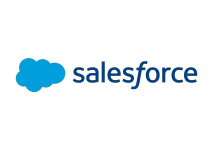If you can’t decide between Salesforce and Tableau, you are in the right place. Salesforce and Tableau are two marketing tools available, but their intended audiences are quite different. Compare them side by side:
Key Takeaways
- Salesforce is a leading CRM platform used by businesses of all sizes. It offers a wide range of features, including sales automation, marketing automation, customer service, and analytics. Salesforce’s extensive customization options and integrations make it a versatile tool for managing customer relationships and sales processes. It is well-suited for businesses with complex sales and marketing operations that require a highly scalable and customizable CRM solution.
- Tableau is a data visualization and business intelligence platform that enables businesses to analyze and present data in interactive and visually appealing ways. It provides advanced analytics and reporting capabilities to help organizations gain valuable insights from their data. Tableau’s focus is on data visualization and analysis, making it suitable for businesses seeking a powerful tool for data-driven decision-making. Both Salesforce and Tableau are essential tools for businesses, but they serve different purposes. Salesforce is primarily a CRM platform used for managing customer relationships and sales processes, while Tableau is a data analytics and visualization tool. The choice between Salesforce and Tableau would depend on the specific needs of the business. If the focus is on managing customer relationships and sales processes, Salesforce would be the preferred choice. On the other hand, if the main goal is data analysis and visualization, Tableau would be the more suitable option.


Main Differences Between Salesforce and Tableau
Salesforce and Tableau are different software designed for different purposes. Salesforce is a CRM platform focused on managing customer data, sales, and customer relationships. Tableau is a data visualization and business intelligence tool, enabling users to create interactive visualizations from various data sources. The choice between Salesforce and Tableau depends on whether users require a CRM solution or a data visualization and analytics tool.
Pricing of Salesforce and Tableau
Here is a comparison of the pricing plans for Salesforce and Tableau:
Salesforce
- Offers various pricing plans depending on the specific needs and features required
- Sales Cloud pricing starts at $25 per user per month for the Starter Edition, $75 per user per month for the Professional Edition, $150 per user per month for the Enterprise Edition, and $300 per user per month for the Unlimited Edition.
- Salesforce Analytics Cloud pricing starts at $75 per user per month for Einstein Predictions and $125 per user per month for Einstein Analytics Growth.
- Salesforce’s pricing plans are generally considered to be more expensive compared to other CRM and analytics platforms.
Tableau
- Offers various pricing plans depending on the specific needs and features required
- Tableau Server pricing starts at $35 per user per month for the Creator plan, $70 per user per month for the Explorer plan, and $840 per user per year for the Viewer plan.
- Tableau Online pricing starts at $15 per user per month for the Viewer plan, $35 per user per month for the Explorer plan, and $70 per user per month for the Creator plan.
- Tableau’s pricing plans are generally considered to be more affordable compared to other analytics platforms.
It’s worth noting that Salesforce and Tableau are both comprehensive platforms that offer different features and capabilities. Salesforce is primarily a CRM platform, while Tableau is a data visualization and analytics platform. The choice between the two will depend on the specific needs and budget of the business.
My experience with Salesforce and Tableau
Salesforce
Salesforce is a comprehensive customer relationship management (CRM) platform that covers various aspects of business operations, including sales, marketing, customer service, and more. It’s known for its scalability and customization options, making it suitable for businesses of all sizes.
However, Salesforce’s primary focus is on managing customer interactions and business processes, and it might not offer the same level of data visualization and analytics capabilities as Tableau.
Tableau
Tableau is a powerful data visualization and analytics platform that allows businesses to analyze and interpret their data through interactive visualizations. It’s designed to help users make data-driven decisions by transforming complex datasets into easy-to-understand visuals.
While Tableau excels in data visualization and analytics, it might not encompass the broader range of customer relationship management functionalities that Salesforce provides. If your primary goal is to visualize and analyze data, Tableau could be a strong choice.
Consider your business needs – Salesforce for customer relationship management or Tableau for data visualization and analytics. Depending on your requirements, you might integrate both platforms to benefit from their respective strengths.
Our Winner
After analyzing both Salesforce and Tableau, we concluded that there is no clear winner. Both platforms are way to different to be compared side by site.
Salesforce is more suitable for those looking for an enterprise CRM, while Tableau is a data visualization platform better suited for organizing and managing data.





